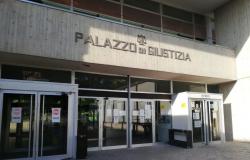The work of a group of senators from the Culture Committee has concluded, which in recent months has reviewed access to the medical degree course, currently only allowed to students who pass an entrance test, a limitation called “limited number”. The news was welcomed with satisfaction by many majority politicians who mistakenly spoke of the abolition of the limited number. «Great satisfaction for the stop to the limited number of students in medicine, a historic battle of the League. From words to deeds!” https://twitter.com/matteosalvinimi/status/1783070122522952018 on X the Minister of Transport Matteo Salvini. The new rules are not definitive, in fact many still have to be discussed, but one thing is certain: the limited number will not be abolished.
Over the last ten years, the abolition of limited enrollment in medical courses has been at the center of political debate, proposed as the solution to the lack of doctors in hospitals and in the area. Access to medical university is called a limited number of places because the entrance tests organized every year provide a much lower quantity of places than demand. The next entrance test, for example, will guarantee access to medical schools to just over 20 thousand people compared to the over 50 thousand who will realistically apply.
The entrance test is not the only barrier that must be overcome by those who want to become a doctor. The second barrier consists in the specialization required for employment in hospitals: after graduation, to become specialists, doctors must win a national competition from the Ministry of Education and obtain a scholarship to practice a specialization in a hospital. Once specialized, they can participate in competitions to be hired on a permanent basis by the national health service (SSN).
The limited entry into universities and the number of scholarships made available each year therefore determine the quantity of doctors who in the future will be able to participate in specializations and ultimately work in hospitals or in the area as family doctors. The current problems are therefore the result of sloppy planning by many of the governments that have followed one another over the last two decades, and the changes that are decided now will have effects in at least ten years.
– Read also: New doctors avoid emergency rooms
The text adopted by the group of experts of the Senate Culture Committee is a parliamentary initiative legislative proposal, i.e. proposed by parliamentarians. Now it will also have to be examined by the Education Commission and then it will be voted on in the Chamber. Once approved, the government should approve a legislative decree according to which anyone can enroll in medical university, attend courses and take four exams in the first six months of school: at the end of this period the aspiring doctors will be evaluated and only those who have a high score will be able to access the available places. In this way the access barrier would be moved by six months, from the entrance tests to the rankings to be filled in at the end of the first semester.
It is not yet clear what the criteria will be for establishing the score, whether the grade of the four exams will be enough or whether a test will be introduced to make more selection. The government will have one year to study and approve the legislative decrees, and decide operational issues such as the definition of the rankings. “However, we can already say today that the first semester exams will take place electronically with closed-ended questions,” he told Daily healthcare Francesco Zaffini (Brothers of Italy), president of the Senate Health Commission and rapporteur of the measure. «For useful placement in the national ranking, three elements will be considered: the university training credits obtained by completing the exams, the grade received and the number of correct answers given. In this way the complex mechanism of the tests is overcome.”
Zaffini also said that there has been a lot of confusion regarding the limited number: the limit on registrations will remain and will continue to be thought out and planned as is the case now, by cross-referencing the data from the Ministry of the University with that of the Ministry of Health. Minister Bernini said that 30 thousand doctors will be trained in the coming years, a number already foreseen with the limited number.
The effects of the new proposal would be above all on access to the first six months of medicine, with notable consequences for universities. Gian Vincenzo Zuccotti, director of the pediatrics department of the Buzzi hospital in Milan and vice-rector of the state university, told the Corriere della Sera that with the new rules there will be capacity problems because in the universities there are not classrooms large enough to accommodate all the aspiring doctors: «And we don’t even have enough professors either to hold the courses or to have everyone take the exams in good time, that is, within the first semester. Admission to the second semester is however subject to the achievement of a certain number of training credits. I imagine the enormous psychological pressure of these kids.”
The pressure due to competitiveness is not a secondary element. The model that inspired the Culture Commission’s proposal is in fact the French one, which in recent years France has questioned and then partially modified. One of the problems of this model is the strong selection that every year causes a certain disillusionment among students forced to change their course of study at the end of the first semester or first year, after having invested energy and placed hopes in their university career. In Italy the tension linked to the admission process lasts the time of the entrance test, in France at least six months.
Due to this approach, in the last ten years many French students have emigrated to become doctors abroad: in Belgium, Romania, Hungary and Australia. Since 2021, changes have therefore been introduced in France – such as a new university diploma called Libre Accés Santé (free access to healthcare) – to avoid too rigorous selections once university has already started.
According to some experts including Giovanni Fattore, professor of health economics at Bocconi University, the opening of medical courses to anyone risks reducing the quality of teaching: the current selection before the start of lessons allows students with more potential and propose lessons with a limited number of students, less dispersive.
Even the medical associations are against the proposal. The national federation of medical associations (Fnomceo) will give a contrary opinion due to the so-called employment “funnel”, i.e. the risk that in ten years there could be many more doctors than there are places available in hospitals. The president of the federation, Filippo Anelli, called on politicians to consider the significant delay between decisions and their effects, which has been rather overlooked in the debate in recent years. «To train a doctor it takes 10 years, that is, six years of a degree in Medicine and 4 years of specialization. We have estimated that in 10 years around 7 thousand doctors will have retired”, he told al Sun 24 Hours. «Given this “hole”, already this year the forecast of enrollments in Medicine will reach 20 thousand units. This means that in 10 years, in 2034, we will be able to hire 7 thousand doctors, i.e. the number of those who have retired, but we will not be able to employ 13 thousand doctors who will be more (net of the lack of doctors which will be filled already in the next years, ed.). If the limited number of students is eliminated, admissions to Medicine will be many more, at least double.”
– Read also: Italian doctors are the oldest in Europe






